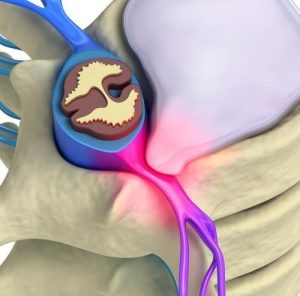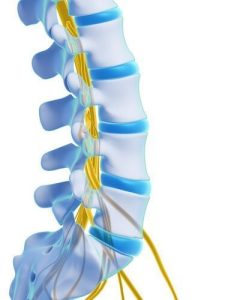Spinal Stimulation Treatments in NYC (Downtown Brooklyn & Lower Manhattan)

Despite best efforts to relieve individuals of pain either through conservative or surgical measures, some patients experience chronic pain.
A spinal cord stimulator is permanently implanted in the spinal canal to provide pain relief. This procedure attempts to convert the painful sensation to a tingling sensation, which the brain perceives as more desirable. Small leads with multiple electrodes are positioned over the spinal cord. There are several designs of spinal cord stimulation devices.
A spinal cord stimulator differs from traditional surgery in several ways. The spinal cord stimulator does not change the underlying condition; it simply changes the brain’s perception of pain.

There are two parts to the surgery. There is a trial phase in which the leads are placed and connected to an external power supply. You will go home for several days to weeks and see how well the device controls your pain. If this is successful, a permanent system will be implanted. If the trial is not successful, an attempt at a second trial with a spinal cord stimulator may be undertaken. If it also fails, the leads will be removed permanently.
Conditions Treated with a Spinal Cord Stimulator
A spinal cord stimulator may be used to treat a variety of chronic pain conditions including:
- failed back surgery syndrome
- multi-level degenerative problems
- problems with how the body processes pain signals
Book Appoinments
212.404.8070Once you have decided to have surgery, the following events take place:
- A medical examination.
- Chest X-ray, EKG and blood work.
- You may be asked to have a neurological or psychological examination.
Before Spinal Cord Stimulation Treatment
- If taking aspirin or anti-inflammatory medications daily, stop these medications at least one week before spinal cord stimulator surgery.
- If you take prescription medications or other drugs, including herbals, ask your doctor how soon before surgery you should stop taking these.
- Do not have anything to eat or drink for 6 to 8 hours before spinal cord stimulator surgery.
- You will check into the hospital the morning of spinal cord stimulator surgery.
- Prior to surgery, you will be asked to sign permits for surgery, anesthesia, blood and blood products.
During Spinal Cord Stimulation Treatment
- You will have received a mild sedative, but need to remain awake during the procedure.
- After the skin is cleaned, a local anesthetic is used in the operative area.
- A needle is placed into your back.
- The wire-like leads are passed through the needle and into the region of the spinal cord.
- Fluoroscopy, a method used to make images, is used to show the doctor where the leads are.
- After the leads are placed, the doctor will turn the device on and ask questions about where you are feeling stimulation in relation to where your pain is.
- The leads will be repositioned and the settings on the electrodes changed until the best possible coverage of your painful areas is achieved.
- The opposite end of the leads will be connected to an external generator to power the electrodes.
- The procedure usually takes at least an hour.
After Spinal Cord Stimulation Treatment
- You will be in the recovery room from 1 to 1½ hours.
- The surgeon will contact your family while you are in recovery.
- You will usually go home the same day as the procedure.
- You will have a device to use to turn the unit off and on.
- It is important to avoid twisting and bending.
- An appointment will be made with your doctor to discuss your responses to the trial.
- If the trial is successful, a permanent system will be implanted.
- A spinal cord stimulator may not relieve all your pain. This is particularly true if you have had multiple
- previous spine surgeries. However, the goal is to reduce pain so that your quality of life can be significantly improved.
-
“VERY KIND”
Dr. Raval is very kind and explains everything in layman’s terms, which is super helpful. Thanks so much, guys! 🙂
-
“PLEASANT AND PROFESSIONAL”
Best doctor visit I ever had. Staff was pleasant and the doctor was very pleasant and professional. Took his time and answered all my questions.
FAQ: Spinal Stimulation Treatments in NYC
Does spinal cord stimulation remove all pain?
The treatments vary from person to person. Most people have significant pain reduction while some still feel minor pain and discomfort.
Will I still have to take pain medication?
Spinal stimulation treatments typically result in needing to take less pain medication. In rare cases will zero pain medication be needed if taken previously.
Can I control the stimulation therapy?
Yes, the device can be turned off and on as needed. Additionally, you can increase and decrease the stimulation levels as prescribed by your spine specialist.
Will I be able to see and feel the spinal simulator device?
The stimulator is very small and has a low profile design. Your spine doctor will place it in the most discreet location. But those who make an attempt are able to see and feel it.
Does insurance cover the spinal cord treatment in NY?
Yes, most insurance including Medicare should cover the procedure in New York. They will first determine your eligibility and might ask for a psychologist evaluation.
Why would I need a psychological evaluation before receiving a spinal treatment?
This is often required by insurance companies but the reasoning is that some people experience stress and anxiety when a foreign device is implanted in their body. It also serves the purpose to ensure the patient understands the expectations of the results.
When will I recover after the procedure?
Usually 1-2 weeks is sufficient for recovery. It is important to refrain from heavy lifting and intense activity during this time. Speak with your spine specialist regarding your specific situation before the procedure.
For more information about Spinal Cord Stimulation or to schedule an appointment with the top pain relief doctors in Downtown, Brooklyn, and Lower Manhattan, please call Downtown Pain Physicians for a consultation and indicate which location you want to visit.
-
Dr. Raj Raval, M.D.
- Board Certified
- Interventional Pain & Musculoskeletal Medicine Specialist
-
Education & training
- SUNY Health Science Center
- Rutgers University Fellowship
-
Dr. Raphael Jaramillo, MD
- Board Certified
- Interventional Pain & Musculoskeletal Medicine Specialist
-
Education & training
- Touro College of Osteopathic Medicine
- New York University
- Rutgers University

